Table Of Contents:
- Understanding the Basics of Room Layout Design
- Assessing Your Space: Evaluating Room Dimensions and Functions
- Principles of Space Optimization in Interior Design
- Choosing the Right Furniture for Your Room Layout
- Choosing the Right Furniture for Your Room Layout
- Creating Functional Zones to Improve Daily Living
- Practical Tips for Optimizing Small Spaces
- Practical Tips for Optimizing Small Spaces
Are you struggling to create a balanced and inviting living space? Many homeowners overlook the importance of room layout design, which can significantly impact the energy and functionality of a room. In this article, I will guide you through the essential principles of optimizing your living space, including how to assess your room dimensions, choose the right furniture, and create functional zones. By applying these expert tips, you can transform your living room into a harmonious area that maximizes symmetry and aligns with the golden ratio, ultimately enhancing your daily living experience.
Understanding the Basics of Room Layout Design
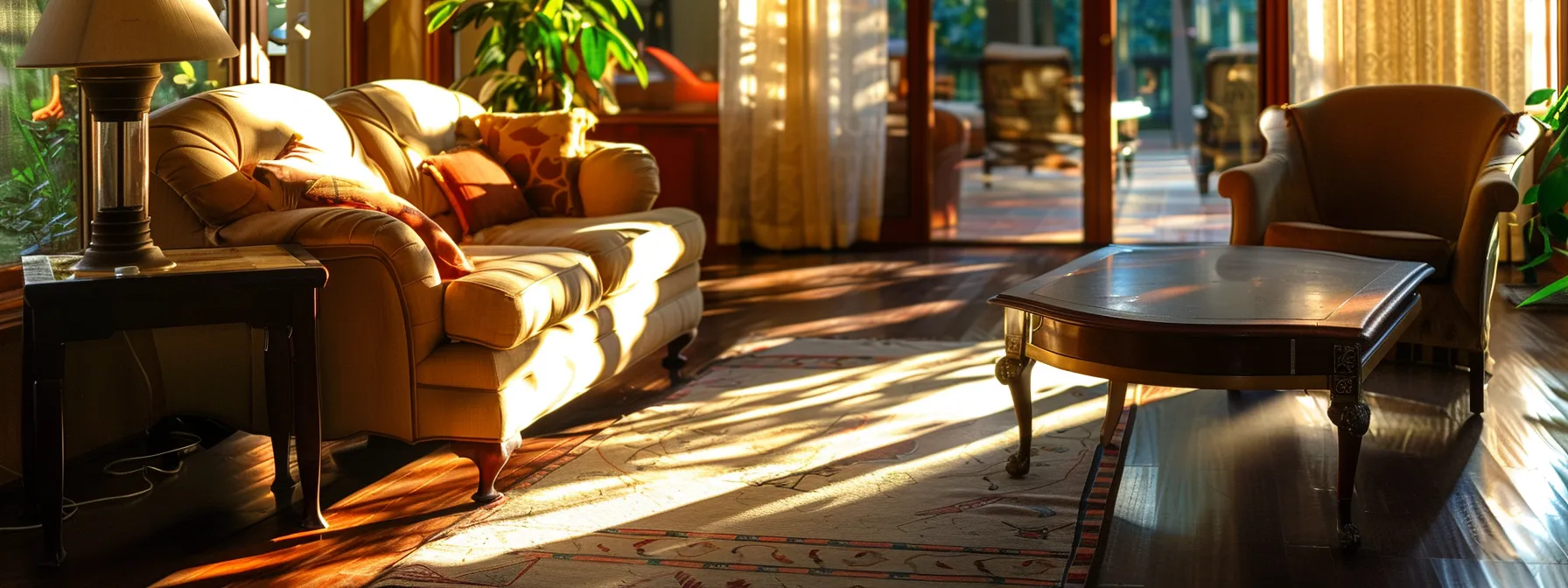
Effective space planning is essential for creating a functional and inviting environment. I will explore key elements of balanced room design, such as appropriate furniture placement and the role of architectural features like walls and ceilings. Additionally, I’ll highlight common mistakes, including poor use of area rugs and headboards that distract rather than enhance, ensuring your living space is optimized for both comfort and aesthetics. For more information, visit the YOLO Interiors Homepage or check out our Map Location.
The Importance of Effective Space Planning
Effective space planning is foundational in optimizing your living space, as it shapes the overall perception of a room. For instance, thoughtfully placing a console table can enhance aesthetic appeal while maintaining smooth traffic flow, allowing for ease and comfort in everyday use. Additionally, incorporating elements like adjustable dimmers and strategically positioned shelves can transform the ambiance, making it both inviting and functional, while avoiding visual clutter that detracts from the design.
Key Elements of Balanced Room Design
Creating a balanced room design involves understanding the essential components of your floor plan. In an open plan concept, harmony among adjacent areas is crucial; you want each space to flow into the next while maintaining its unique identity. Achieving the right ratio of furniture and negative space not only enhances visual appeal but also promotes functionality, making your living space more inviting and easier to navigate.
| Element | Importance | Application |
|---|---|---|
| Floor Plan | Defines the layout and flow of the room | Use zoning to separate areas in open plans |
| Harmony | Creates a cohesive look | Choose a consistent color palette and materials |
| Ratio | Ensures furniture is appropriately scaled | Balance large pieces with smaller accents |
| Furniture Placement | Affects traffic flow | Position sofas to encourage conversation |
Common Mistakes to Avoid in Room Layouts
One of the most common mistakes I encounter in room layouts is neglecting the flow and functionality created by doors and light fixtures. When furniture blocks a door or is placed too close to a light fixture, it can disrupt the overall balance of the space and create obstacles that hinder movement. Embracing principles from feng shui, I always advise considering how energy, or “chi,” flows through a room; arranging furniture to promote creativity and openness can significantly enhance both the aesthetic and practical aspects of your living environment. It’s essential to keep aesthetics aligned with sustainability; choosing pieces that work harmoniously together not only beautifies the space but also creates an inviting atmosphere that caters to your lifestyle.
You understand the basics of room layout. Now, let’s assess your space, measuring its dimensions and determining how it serves your needs.
Assessing Your Space: Evaluating Room Dimensions and Functions
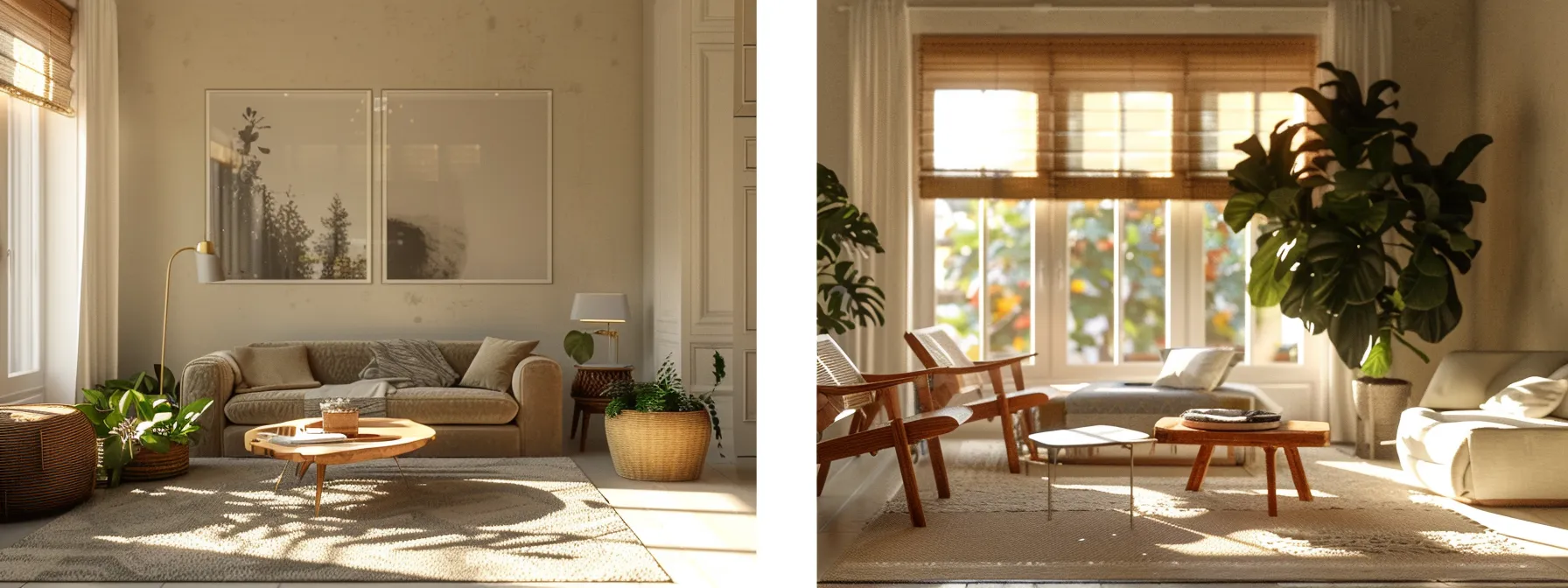
Measuring and mapping your room accurately is the first step in optimizing your living space. It’s vital to identify each area’s primary function, whether it’s a dining room, bedroom, or living room with a loveseat. Consider traffic flow and accessibility while integrating architectural features like wood accents into your design to create a balanced atmosphere. These insights will enhance both form and function in your layout.
Measuring and Mapping Your Room Accurately
To achieve an optimal room layout, I start with precise measurement and mapping of the space. Accurately recording dimensions allows me to identify the best placement for features like sconces and chandeliers, ensuring that these lighting elements enhance both function and style. My attention to detail in mapping out the room‘s flow and functionality helps create a harmonious environment that meets the needs of its users while keeping the aesthetic appeal intact.
Identifying the Primary Function of Each Space
Identifying the primary function of each space is crucial in effective interior design. For instance, when designing a living room that centers around a fireplace, I focus on arranging seating, such as chairs and sofas, to promote conversation while ensuring accessibility for movement. By understanding how you plan to use the space, I can create a layout that not only meets your functional needs but also enhances the overall warmth and flow of the room.
Considering Traffic Flow and Accessibility
In considering traffic flow and accessibility, I emphasize the importance of unobstructed pathways, not just for ease of movement, but also for creating a harmonious layout. For instance, placing a bookcase behind the sofa can serve as a stylish room divider while ensuring that there is enough space to walk comfortably around it. I also pay attention to the height of furniture to maximize sunlight entry; low-profile pieces ensure that natural light can fill the room, enhancing its overall ambiance and making it more inviting.
Integrating Architectural Features Into Your Design
Integrating architectural features into your design is essential for creating a cohesive living space. When working on a bathroom layout, for instance, I focus on utilizing the structure of the roof and walls to maximize both functionality and aesthetics. By embracing minimalism, I can select decorative arts that enhance these features while maintaining an open and clean area that feels both spacious and inviting.
- Identify key architectural elements that can be highlighted.
- Consider how the roof structure influences the overall atmosphere.
- Utilize minimalism to keep the design uncluttered.
- Incorporate decorative arts that complement the space’s features.
- Focus on creating a seamless flow throughout the area.
Now that you’ve assessed your space, it’s time to look at how to make it work for you. Principles of space optimization will reveal the key to transforming mere dimensions into a seamless living experience.
Principles of Space Optimization in Interior Design
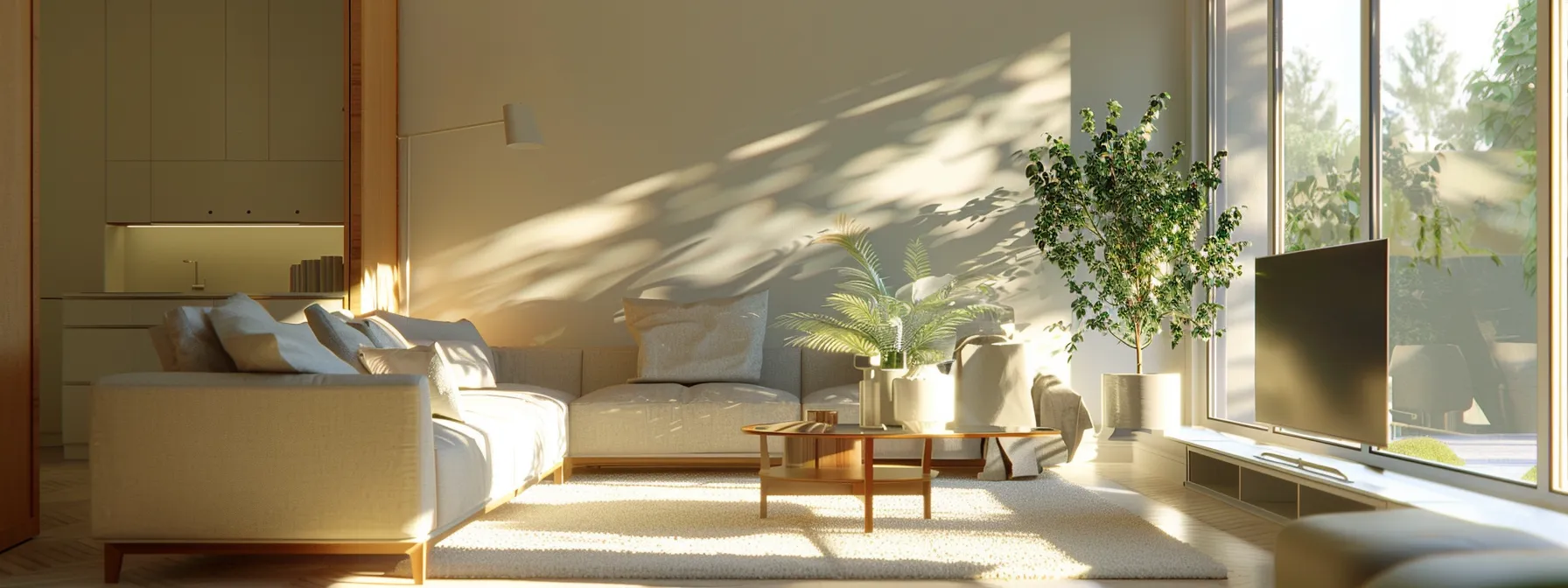
Applying minimalist principles is key to creating a clutter-free space, which I prioritize in my designs. Increasing natural light and improving sight lines also play a crucial role in enhancing the room‘s ambiance. Balancing aesthetics with practicality ensures that every element, from sofas to sinks, serves a purpose. Lastly, using proportions skillfully achieves harmony throughout the layout. I’ll delve into each of these aspects to provide innovative insights from my experience at YOLO Interiors.
Applying Minimalist Principles for a Clutter-Free Space
Applying minimalist principles in interior design not only contributes to a clutter-free space but also enhances the overall functionality of the room. By selecting essential furniture pieces with a focus on clean lines and durable materials, such as metal accents in shelving or décor, I create an environment that feels open and inviting. This approach encourages mindful organization, allowing for easier maintenance and ensuring that every element in the room serves a purpose, resulting in a space that reflects both style and practicality.
Increasing Natural Light and Improving Sight Lines
Increasing natural light and improving sight lines are essential for creating an inviting and spacious atmosphere in any room. I focus on strategically placing mirrors and light-colored furnishings to reflect and amplify light, enhancing the overall brightness of the space. Additionally, opting for open shelving instead of closed storage solutions allows for unobstructed views and promotes a sense of openness, making the area feel larger and more connected to the outside environment.
Balancing Aesthetics With Practicality
Balancing aesthetics with practicality is fundamental in creating a successful room layout. I prioritize selecting furniture that is not only visually appealing but also functional, ensuring that each piece fulfills a specific purpose. For example, I often suggest multipurpose items, like ottomans that offer both seating and storage, allowing clients to maintain a tidy space without sacrificing style. This approach helps me to create a living environment that feels both inviting and practical, ultimately enhancing the overall user experience.
Using Proportions to Achieve Harmony
In my experience, using proportions effectively is key to achieving harmony in room layout design. By carefully selecting furniture that complements both the space and each other — for example, pairing a large sectional with smaller accent chairs — I create a visual equilibrium that feels intentional and balanced. Understanding the relationship between the size of furniture and the dimensions of the room not only enhances aesthetics but also optimizes functionality, ensuring that every area of the space serves its purpose without feeling overcrowded.
In every well-designed space, furniture serves as both foundation and function. Selecting the right pieces can transform how a room feels and flows, guiding movement and enhancing life within your home.
Choosing the Right Furniture for Your Room Layout

Choosing the Right Furniture for Your Room Layout
Selecting furniture proportional to your space is crucial for creating an inviting atmosphere. I focus on multipurpose pieces that add functionality while arranging items to facilitate interaction among occupants. Additionally, I consider scale, style, and comfort to ensure every element enhances both aesthetics and practicality, making your living space a true reflection of your lifestyle.
Selecting Furniture Proportional to Your Space
When selecting furniture proportional to your space, I prioritize understanding the scale of each item in relation to the dimensions of the room. For example, a large sectional sofa can overwhelm a small living area, while a delicate coffee table may get lost in a spacious room. I always recommend visualizing the layout by using painter’s tape to outline the dimensions of your furniture on the floor; this practical step helps identify the best fit and ensures that each piece enhances the room’s overall functionality and aesthetic appeal.
Multipurpose Pieces for Added Functionality
In my experience, incorporating multipurpose pieces is essential for maximizing functionality in any room layout. For instance, I often recommend ottomans that serve as both seating and hidden storage; this allows clients to maintain a tidy living space while providing additional seating when needed. By choosing furniture that can adapt to various uses, you not only enhance the practicality of your design but also ensure that every piece contributes to a cohesive and inviting atmosphere.
Arranging Furniture to Facilitate Interaction
Arranging furniture to facilitate interaction is key in creating an engaging living space. I focus on positioning sofas and chairs in a way that encourages conversation and fosters connectivity among occupants. For instance, placing seating in a circular or semi-circular layout rather than lining it against the walls helps create a warm and inviting atmosphere that promotes socializing and comfort.
- Prioritize circular or semi-circular arrangements for seating.
- Ensure pathways are clear for easy movement between furniture.
- Incorporate small surfaces for drinks and snacks to enhance the experience.
Considering Scale, Style, and Comfort
When selecting furniture for your room layout, considering scale, style, and comfort is vital to achieving an inviting atmosphere. I prioritize pieces that are proportionate to the size of the space; for instance, a bulky sofa may overwhelm a small room, while a lightweight chair can provide elegance without sacrificing ease of movement. Additionally, aligning furniture styles with your overall design theme ensures a cohesive look and feel, and choosing comfortable seating promotes relaxation and enhances the living experience, ultimately reflecting your unique lifestyle.
Choosing the right furniture sets the stage. Now, let’s explore how to create functional zones that enhance your daily life.
Creating Functional Zones to Improve Daily Living
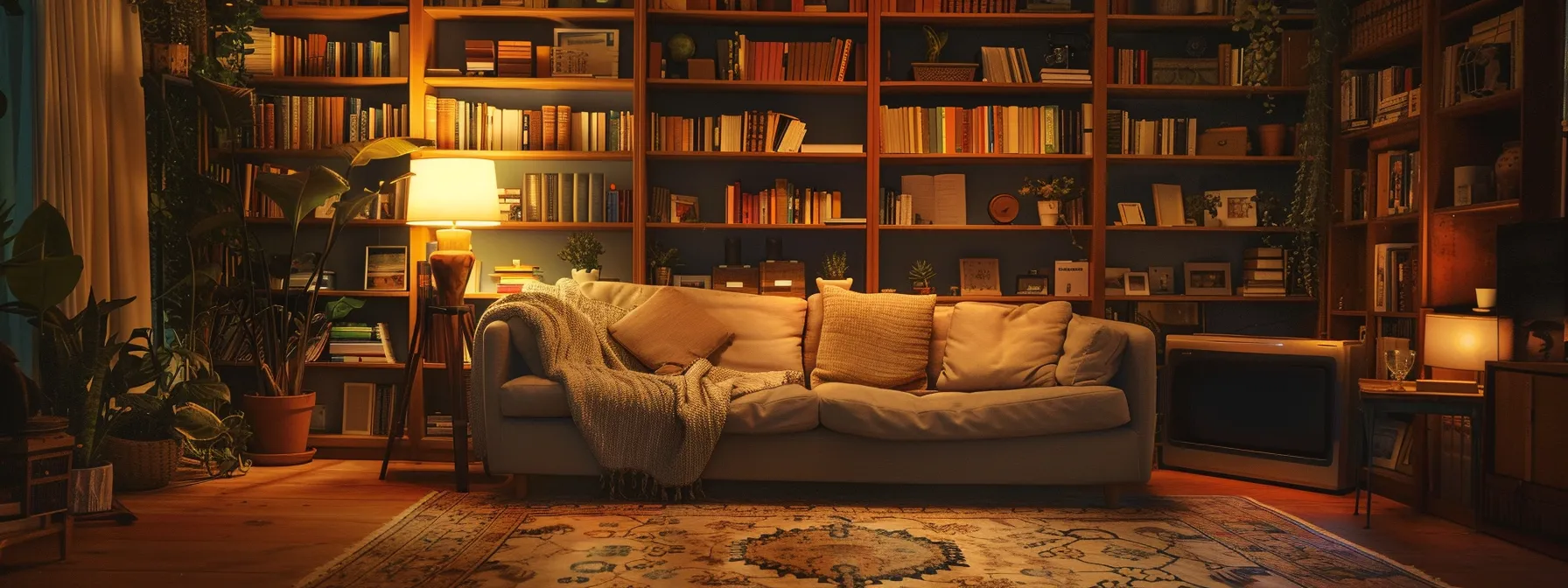
Defining areas within open-plan spaces enhances functionality and flow. I use rugs and strategic lighting to create visual separations between zones, making distinct areas for various activities. Additionally, I focus on crafting flexible spaces that adapt to multiple uses while seamlessly integrating storage solutions. These principles not only improve daily living but also foster a cohesive and inviting atmosphere.
Defining Areas Within Open-Plan Spaces
Defining areas within open-plan spaces is vital for enhancing functionality and flow. I often use rugs, furniture placement, and strategic lighting to visually separate distinct zones, such as a cozy reading nook or a dining area within a larger living environment. This approach not only gives each area its own identity but also supports daily living by making transitions between activities seamless and intuitive, ensuring that every inch of your space serves a purpose.
Using Rugs and Lighting to Separate Zones
Using rugs and lighting effectively can significantly enhance the functionality of your space by creating distinct zones within an open-plan layout. I often recommend placing a cozy area rug beneath a coffee table to define a seating area, which visually separates it from adjacent spaces, such as dining or work areas. Additionally, strategically positioned floor lamps or pendant lights not only illuminate specific zones but also draw attention to these defined areas, enhancing both the aesthetic appeal and practicality of your living space.
Creating Flexible Spaces for Multiple Uses
Creating flexible spaces is an essential principle in optimizing your living environment, as it allows rooms to adapt to your changing needs throughout the day. I often incorporate multifunctional furniture like sofa beds or extendable dining tables, enabling a seamless transition from hosting friends to enjoying a quiet evening at home. By strategically using furniture arrangements and decor elements, I can design areas that serve various purposes while maintaining an inviting atmosphere for everyday living.
- Utilize multifunctional furniture for versatility.
- Apply strategic furniture arrangements for seamless transitions.
- Maintain an inviting atmosphere while balancing different uses.
Including Storage Solutions Seamlessly
Including storage solutions seamlessly in your room layout is essential for optimizing function without sacrificing style. I often integrate built-in shelving and stylish ottomans that double as storage to keep the space organized and clutter-free. This approach not only enhances the aesthetic of the room but also meets practical needs, ensuring that everything has a designated place, which contributes to a harmonious and inviting atmosphere.
- Utilize built-in shelving to save space.
- Incorporate multifunctional furniture for storage.
- Designate specific areas for everyday items to reduce clutter.
Creating functional zones makes life better. Now, let’s look at practical tips to maximize even the smallest spaces.
Practical Tips for Optimizing Small Spaces
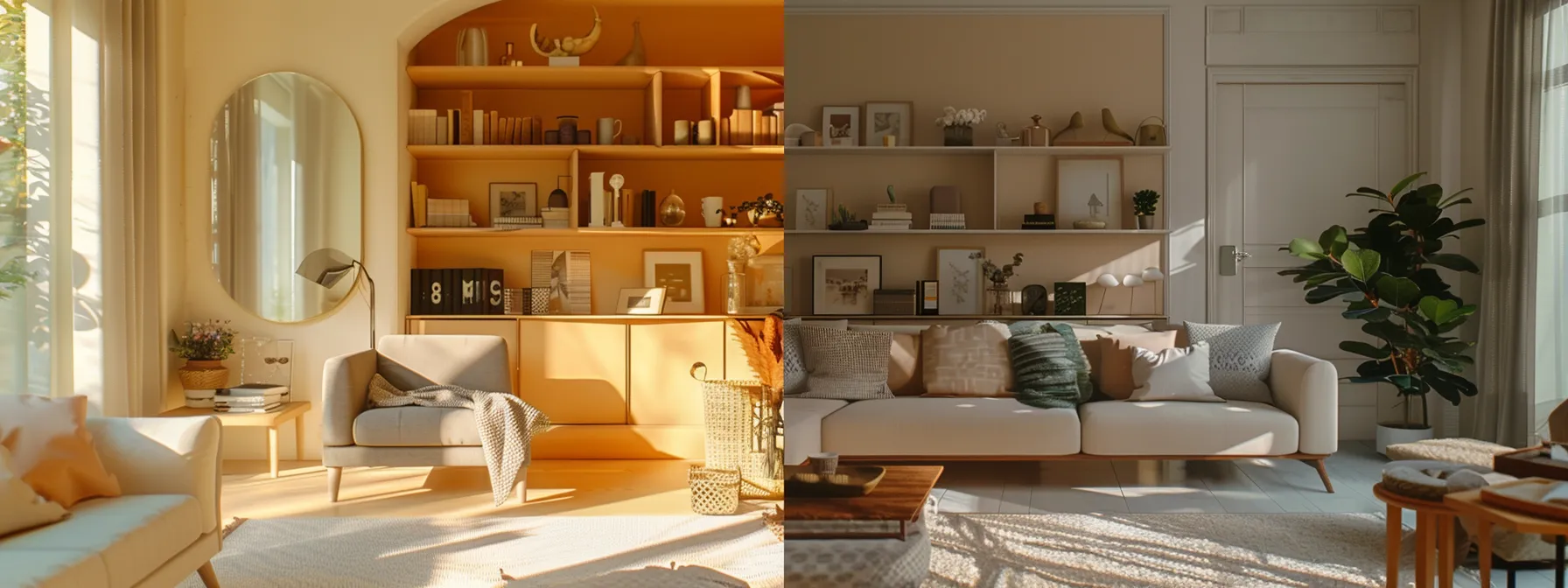
Practical Tips for Optimizing Small Spaces
In my experience, optimizing small spaces requires strategic choices that enhance both functionality and aesthetics. I focus on utilizing vertical space effectively, choosing light colors to create an open feel, and reflecting light with mirrors to amplify brightness. Additionally, selecting space-saving furniture options and keeping walkways clear are essential for maintaining a clutter-free environment. These principles will help you maximize your living space while ensuring it remains inviting and practical.
Utilizing Vertical Space Effectively
Utilizing vertical space effectively is essential when optimizing small living areas. By incorporating tall bookshelves or wall-mounted storage solutions, I can draw the eye upwards, creating the illusion of a larger space. Additionally, hanging plants or artwork high on the walls enhances the visual interest while maximizing floor area, allowing for seamless movement throughout the room.
| Vertical Space Solution | Benefits | Application |
|---|---|---|
| Tall Bookshelves | Offers storage without taking up floor space | Fill walls with books, decor, or plants |
| Wall-Mounted Storage | Reduces clutter and maintains accessibility | Install shelves or cabinets above furniture |
| Hanging Artwork | Enhances visual appeal and elongates walls | Position artwork at eye level on higher walls |
| Hanging Plants | Adds greenery without using ground space | Use wall planters or ceiling hooks |
Choosing Light Colors to Open Up the Room
Choosing light colors for your walls and furnishings is a straightforward yet effective way to open up a room and make a small space feel more expansive. I often recommend shades like soft whites, light grays, or pastels, as they reflect natural light and create an airy atmosphere. By applying these colors strategically, you can enhance the overall brightness of the space, making it feel larger and more inviting, which is particularly important in compact living areas.
Reflecting Light With Mirrors
Reflecting light with mirrors is one of my go-to strategies for enhancing small living spaces. I find that strategically placing mirrors opposite windows or light fixtures can significantly brighten a room by bouncing natural light around. This simple technique not only creates an illusion of spaciousness but also adds depth, making the area feel more open and inviting.
Space-Saving Furniture Options
When it comes to optimizing your living space, selecting space-saving furniture options can make a significant difference. I often recommend pieces like ottomans that double as storage, sofa beds for additional sleeping arrangements, and nesting tables that can expand when needed. These practical solutions not only enhance functionality but also help maintain a clutter-free environment, ensuring you maximize every inch of your home while still keeping it stylish and inviting:
- Choose ottomans that offer hidden storage.
- Incorporate sofa beds for versatility.
- Use nesting tables to save space when needed.
Keeping Walkways Clear and Uncluttered
Keeping walkways clear and uncluttered is essential for optimizing small spaces and enhancing everyday functionality. I always emphasize the importance of maintaining open pathways between furniture to allow for effortless movement and accessibility, reducing the feeling of confinement in a small room. By arranging furniture strategically and utilizing compact or multifunctional pieces, I can ensure that your living area remains welcoming and practical for daily use.
- Prioritize open pathways for clear movement.
- Choose compact and multifunctional furniture.
- Regularly declutter to maintain an inviting environment.

